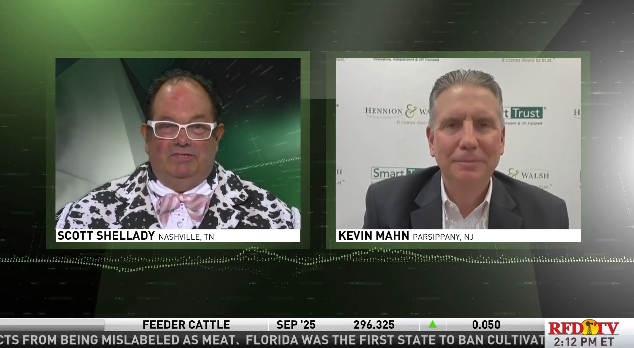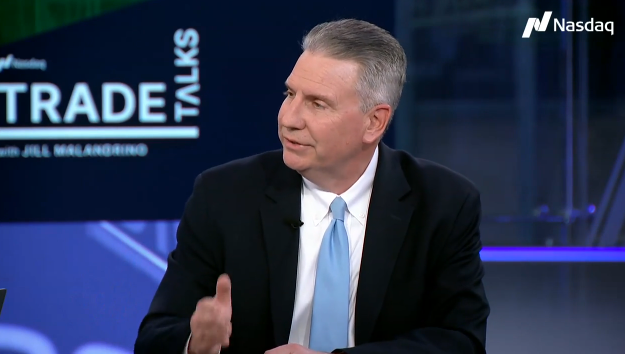
Stocks Slip but Prospects Remain Bright
Market Overview
Sources: Equity Market and Fixed Income returns are from JP Morgan as of 12/02/16. REIT, Rates and Economic Calendar Data from Bloomberg as of 12/05/16.
Happening Now
Stocks gave back some of their recent gains last week with the S&P 500 Index losing 0.9%. Small cap (1) stocks in the U.S., which recently have surged and are up 17.3% on the year, also fell last week dropping 2.4%. On the international front, developed markets (2), slipped back 0.2% and emerging markets (3) declined by 0.3%. Oil (4) posted an impressive increase of 12.2% on the week following a reported agreement by OPEC to cut production.
Economic activity picked up during the third quarter according to the latest revision of U.S. GDP released last Tuesday. The reading showed a 3.2% annualized growth rate, hitting the upper end of consensus estimates. Manufacturing figures and consumer confidence readings also beat estimates in separate releases last week suggesting continued economic stability domestically. Finally, the monthly employment situation report published Friday morning strengthened the case for tighter monetary policy. The report also showed that the unemployment rate fell to 4.6%, the lowest since 2007.
While opportunities abound in 2017, uncertainty may reign supreme. Wall Street has started to release their 2017 Market Outlooks and, as is the case most years, there is a broad consensus. According to the research we have reviewed, it appears that many strategists are calling for higher U.S. stock prices next year driven by optimism associated with the incoming administration but caution that many questions still need to be answered.
Corporate tax reform and a repatriation of overseas cash should boost domestic earnings and help ease current price-to-earnings ratios which some consider excessive. Remember that with prices held steady, higher earnings would lower these measures and potentially attract investors who otherwise might have stayed on the sidelines. Fiscal stimulus, which has been discussed extensively in the media recently, would also likely be supportive of the economy overall. Caution should be taken however since high deficits may limit President Elect Trump’s proposed agenda and specific details about how these programs will be implemented remain sparse. In addition, the resulting robust economic growth could force the Fed to raise interest rates more quickly than anticipated in order to help keep inflation in check.
The following indexes were used to represent asset class returns: (1) Small Cap stocks – Russell 2000 Index. (2) Developed markets – MSCI EAFE Index. (3) Emerging Markets – MSCI EM Index. (4) Oil – WTI Crude.
Important Information and Disclaimers
Disclosures: Hennion & Walsh is the sponsor of SmartTrust® Unit Investment Trusts (UITs). For more information on SmartTrust® UITs, please visit www.smarttrustuit.com. The overview above is for informational purposes and is not an offer to sell or a solicitation of an offer to buy any SmartTrust® UITs. Investors should consider the Trust’s investment objective, risks, charges and expenses carefully before investing. The prospectus contains this and other information relevant to an investment in the Trust and investors should read the prospectus carefully before they invest.
Investing in foreign securities presents certain risks not associated with domestic investments, such as currency fluctuation, political and economic instability, and different accounting standards. This may result in greater share price volatility. These risks are heightened in emerging markets.
There are special risks associated with an investment in real estate, including credit risk, interest rate fluctuations and the impact of varied economic conditions. Distributions from REIT investments are taxed at the owner’s tax bracket.
The prices of small company and mid cap stocks are generally more volatile than large company stocks. They often involve higher risks because smaller companies may lack the management expertise, financial resources, product diversification and competitive strengths to endure adverse economic conditions.
Investing in commodities is not suitable for all investors. Exposure to the commodities markets may subject an investment to greater share price volatility than an investment in traditional equity or debt securities. Investments in commodities may be affected by changes in overall market movements, commodity index volatility, changes in interest rates or factors affecting a particular industry or commodity.
Products that invest in commodities may employ more complex strategies which may expose investors to additional risks.
Investing in fixed income securities involves certain risks such as market risk if sold prior to maturity and credit risk especially if investing in high yield bonds, which have lower ratings and are subject to greater volatility. All fixed income investments may be worth less than original cost upon redemption or maturity. Bond Prices fluctuate inversely to changes in interest rates. Therefore, a general rise in interest rates can result in the decline of the value of your investment.
Definitions
MSCI- EAFE: The Morgan Stanley Capital International Europe, Australasia and Far East Index, a free float-adjusted market capitalization index that is designed to measure developed-market equity performance, excluding the United States and Canada.
MSCI-Emerging Markets: The Morgan Stanley Capital International Emerging Market Index, is a free float-adjusted market capitalization index that is designed to measure the performance of global emerging markets of about 25 emerging economies.
Russell 3000: The Russell 3000 measures the performance of the 3000 largest US companies based on total market capitalization and represents about 98% of the investible US Equity market.
ML BOFA US Corp Mstr [Merill Lynch US Corporate Master]: The Merrill Lynch Corporate Master Market Index is a statistical composite tracking the performance of the entire US corporate bond market over time.
ML Muni Master [Merill Lynch US Corporate Master]: The Merrill Lynch Municipal Bond Master Index is a broad measure of the municipal fixed income market.
Investors cannot directly purchase any index.
LIBOR, London Interbank Offered Rate, is the rate of interest at which banks offer to lend money to one another in the wholesale money markets in London.
The Dow Jones Industrial Average is an unweighted index of 30 “blue-chip” industrial U.S. stocks.
The S&P Midcap 400 Index is a capitalization-weighted index measuring the performance of the mid-range sector of the U.S. stock market, and represents approximately 7% of the total market value of U.S. equities. Companies in the Index fall between S&P 500 Index and the S&P SmallCap 600 Index in size: between $1-4 billion.
DJ Equity REIT Index represents all publicly traded real estate investment trusts in the Dow Jones U.S. stock universe classified as Equity REITs according to the S&P Dow Jones Indices REIT Industry Classification Hierarchy. These companies are REITSs that primarily own and operate income-producing real estate.




